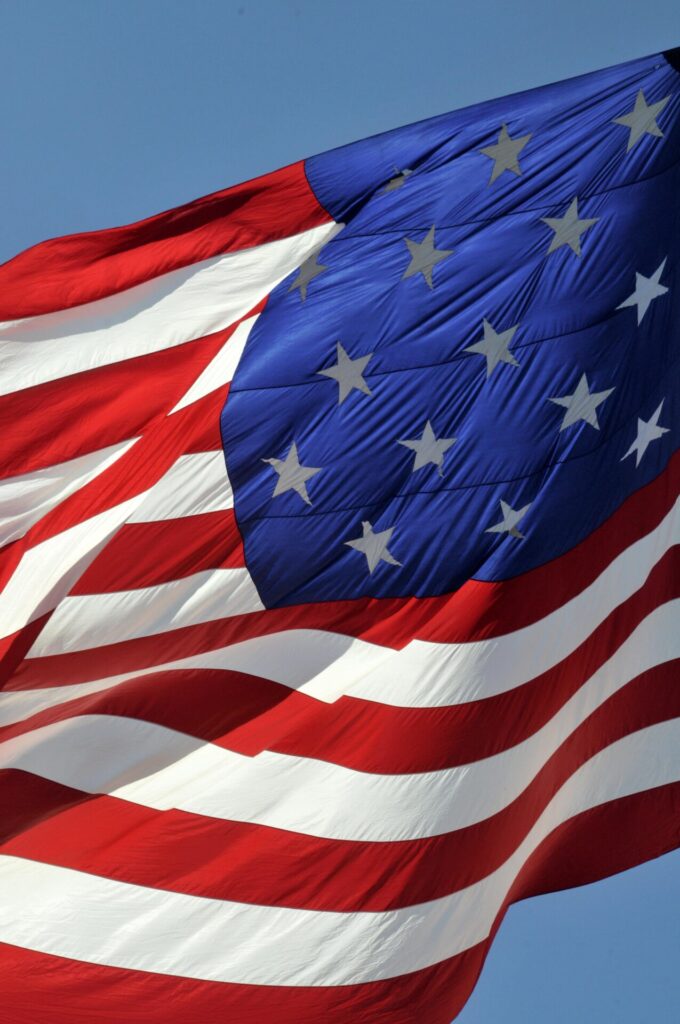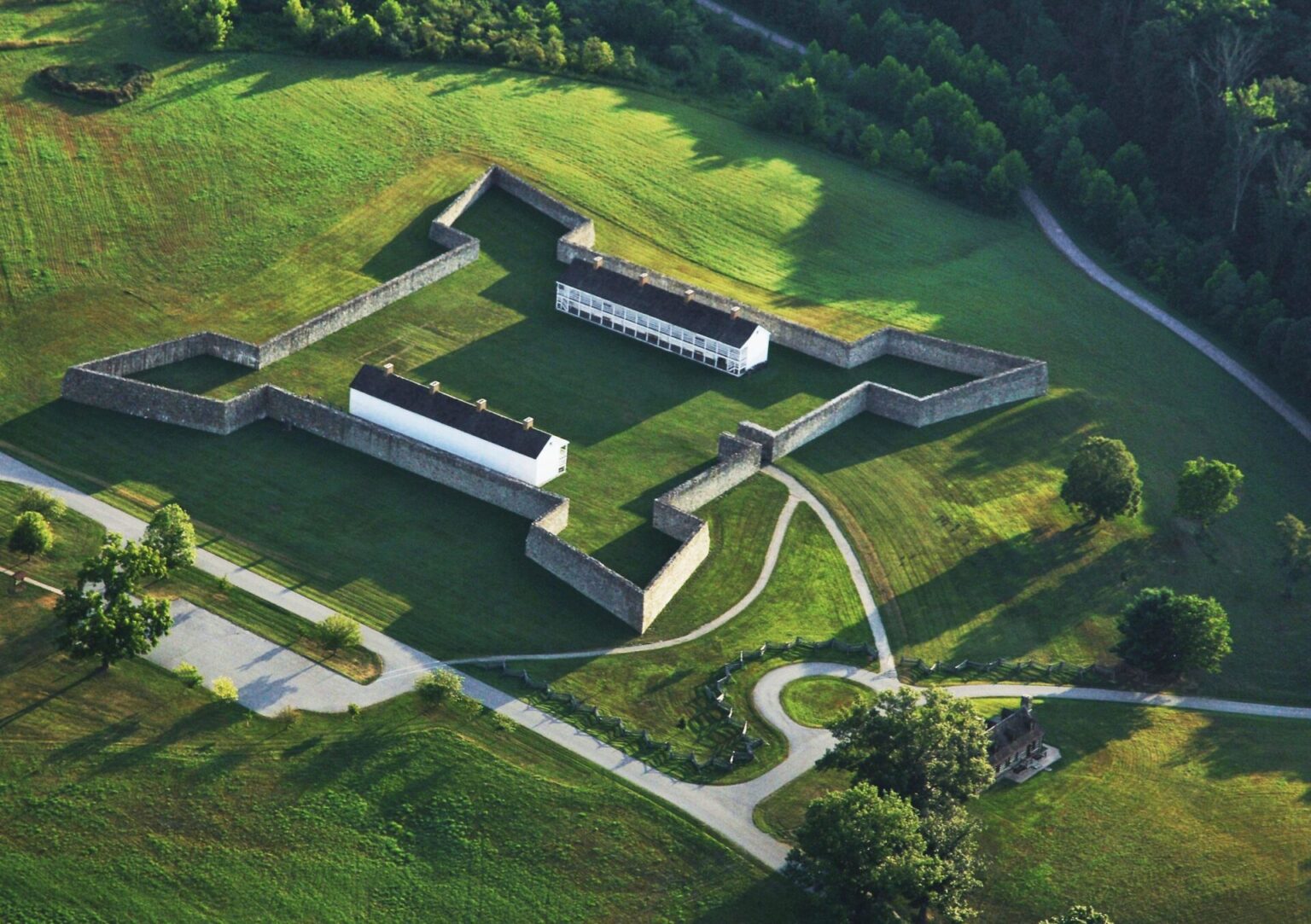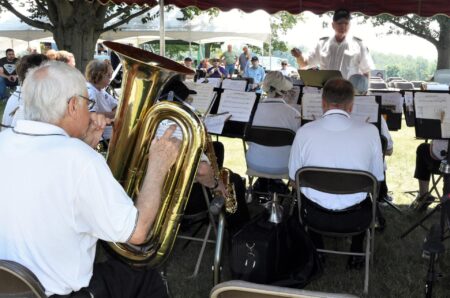For its first 150 years, Fort Frederick was a sleepy military and civilian outpost along the scenic Potomac River. This historic stone fort was built by British colonists, commissioned by Maryland’s leadership in 1756. Perhaps because it was designed and built rock solid- creating a commanding first impression to any who dare challenge it- Fort Frederick saw scarce action in American wars during the next century. But in recent years, the fort transitioned into a treasured architectural, cultural, and recreational Maryland landmark.
The fort’s original construction was overseen by Horatio Sharpe, Maryland’s colonial Governor. The design chosen conformed to a model favored by French military engineer Sebastien de Vauban, considered the father of fort architecture during that era. Vauban reportedly designed over 300 forts during his tenure under King Louis XIV. When completed, the Maryland structure was named in honor of Frederick Calvert, 5th Baron of Baltimore.
Fort Frederick is shaped as a large quadrangle with bastions at each corner. The walls between these four corners are 179 feet long and 17.5 feet high. The fort’s stone walls are three feet thick at their base. The four protective bastions project outward and are 4.5 feet thick. The fort’s main gate is positioned at the south wall’s center. At ground level, the structure is too sprawling to fully appreciate its entirety. A modern-day aerial view clearly shows this French-inspired design.
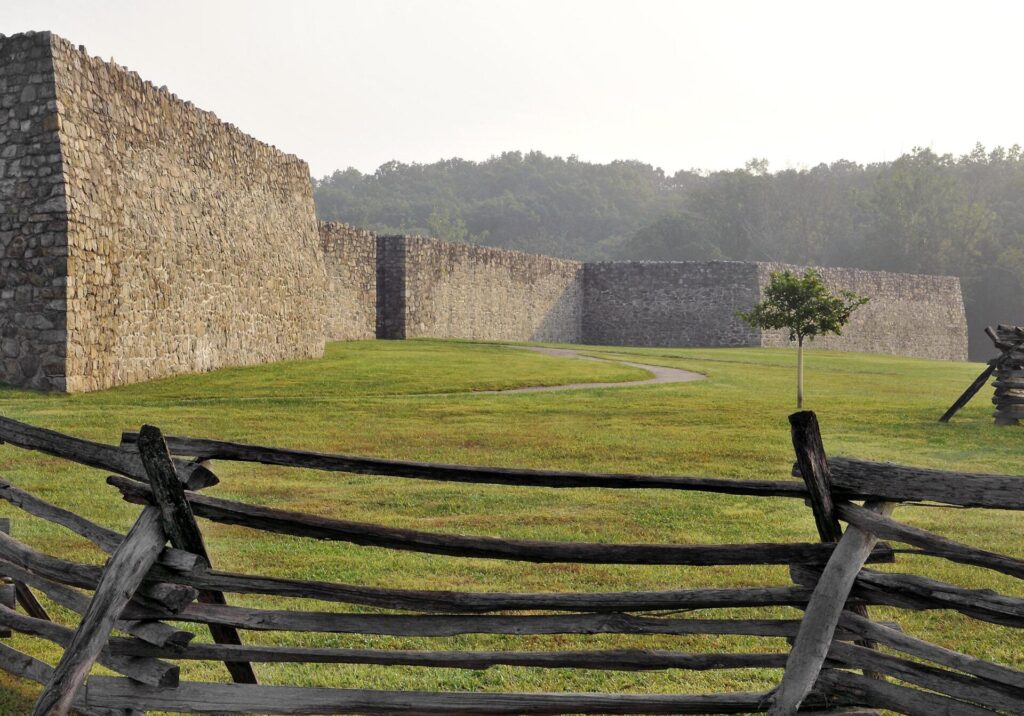
A few years before the fort was completed, the French and Indian War erupted in North America. That war’s name (also called the Seven Years War in Europe) is misleading- since Native Americans fought on both sides of that conflict. Some natives aligned themselves with the British Crown, while other tribes sided with the French. Both countries had sparred continuously as imperial rivals around the globe, but in the mid-1700s they sparred over control of North American territory.
Any shred of diplomacy ceased when both sides sought control at the confluence of the Monongahela and Allegheny Rivers, at present-day Pittsburgh. In a martial action that started the war, the Brits sent 22-year-old colonist George Washington into western Pennsylvania to demand possession of Fort Duquesne. Washington never made it that far, defeated instead at Fort Necessity. For a brief period, French retained control over the three rivers region. Washington’s military glory would come later.
As war commenced, the advantage was skewed in Britain’s favor- their North American settlers outnumbered the French 20 to 1. For this reason, the French relied heavily on their Native American allies, which included the Algonquin, Ottawa and Shawnee tribes.
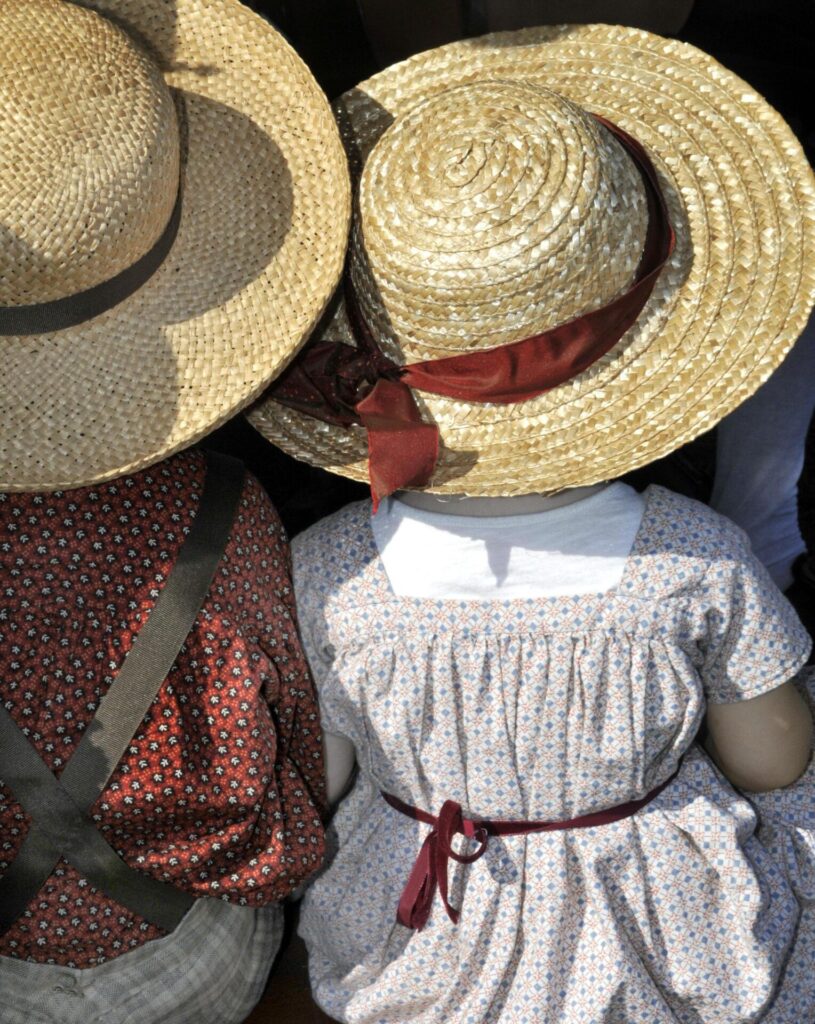
Fort Frederick’s role in the French and Indian War proved to be a staging ground for troops and supplies. Maryland’s militia, which were British subjects, were stationed there, but they saw no action. The war raged until 1763, and major battles were fought in the frontier regions from Virginia to Canada. When it finally ended, Britain’s superior numbers prevailed and they seized most of France’s North American territory. But this victory carried a heavy economic toll. Britain doubled its national debt during the French and Indian War. Later, the country was forced to levy new taxes on their American colonies, a source of future conflict.
A generation later, when the Revolutionary War broke out (and General George Washington rose to fame), Fort Frederick again escaped the crosshairs of major battles. Instead, the fort became a POW camp, used to hold 1000 British and German soldiers captured at far-flung battles in Saratoga, NY and Yorktown, VA.
Following the American victory, Maryland became a U.S. State and the county Fort Frederick perched on was eventually named for war hero and founding father George Washington. About the same time Washington took office as the first President, Fort Frederick was sold at auction. It appeared the abandoned fort fulfilled its military purpose and would fade into oblivion.
During the War of 1812, another Maryland fort stood at the forefront of a second British clash. Fort McHenry was originally a star-shaped earthen fort, later re-enforced with brick and masonry. The fort’s site held extreme military importance- it protected Baltimore’s harbor. During fierce fighting there in 1814, a Frederick, Maryland poet named Francis Scott Key observed the combat, and was inspired to write the Star Spangled Banner, America’s future National Anthem. American forces drove the British out of United States’ territory for the final time. But no military action occurred at Fort Frederick.
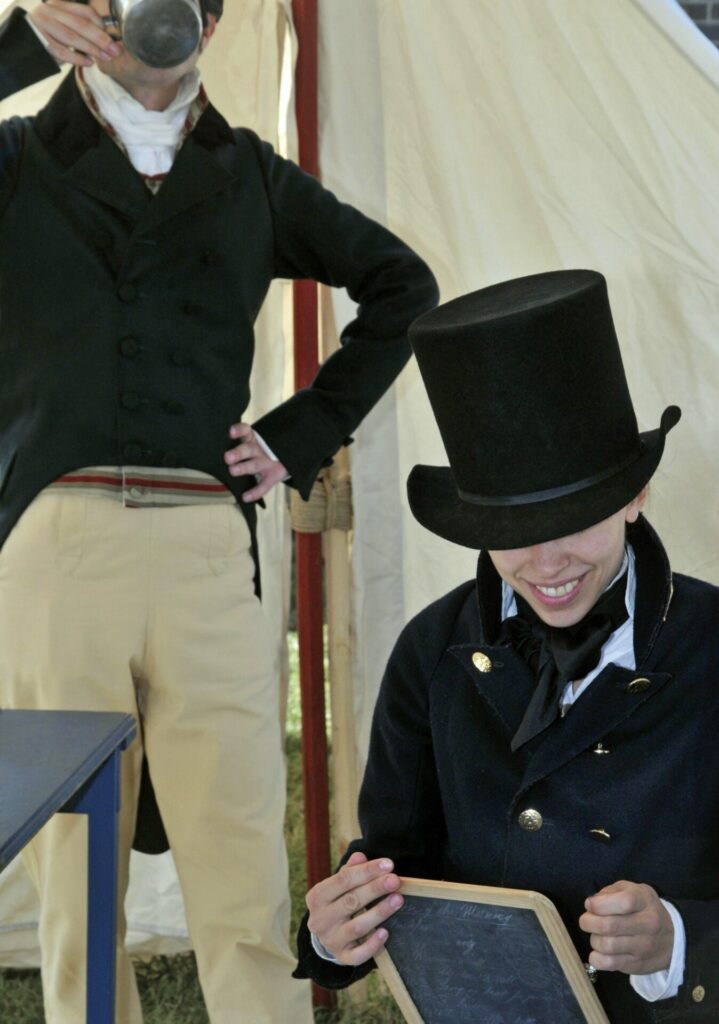
Then, in 1861, Americans began a war aimed toward their neighbors. Maryland was a strategic buffer state between north and south during the Civil War. The C&O Canal and B&O railroad were important transportation resources close to Fort Frederick. So, the fort went back into active service. But fighting there was never furious like nearby Antietam or Gettysburg. On Christmas day 1861, the Maryland Infantry protected Fort Frederick and fought a minor skirmish with Confederate raiders. The Union held the fort that day, and after 1862, the Civil War was fought elsewhere.
Almost simultaneously, a unique man bought the land- and the fort. His name: Nathan Williams. Williams was a freed slave who also paid to free his future wife Ammy. Nathan was known as a shrewd businessman- reportedly selling supplies to both Union and Confederate forces- but supposedly shared the southern information he collected with the Federal Army. After the war, the couple had four children and went to work.
The Williams’ prospered at the former fort, and gradually increased their land holdings. They farmed inside the fort’s walls- they grew an orchard and penned their animals. Maintenance of the fort’s architecture was not a priority, nor financially feasible. When Williams’ heirs finally sold the property in 1911, the fort’s walls had mostly crumbled. Again, it appeared the fort would fade into history.
Then in 1922, the State of Maryland bought the fort along with 500 adjoining acres. With foresight, they planned Maryland’s first State Park. Luckily, the fort’s original architectural plans were discovered and with patient archeology and dedicated resources, the forts walls were later reconstructed. During the Depression, the Civilian Conservation Corp set up a work camp and completed much of that restoration. The military structure was revitalized to resemble its original 1750s condition. That successful feat was later recognized with Fort Frederick designated a National Historic Landmark.
For modern-day visitors, Fort Frederick appears perfectly preserved. Massive stone walls once again rise skyward to fend off imaginary invaders. Two of three original barracks have been restored- one to show how soldiers were garrisoned, another to exhibit and interpret artifacts relating to the fort’s history.

The surrounding landscape remains inspiring, nestled next to the mighty Potomac River. As a State Park, Fort Frederick’s 585-acre property has a multitude of natural recreational activities. Visitors can hike, camp, fish, boat, and picnic, along with enjoying its history. Nearby is the 23-mile Western Maryland Rail Trail.
On February 11, as part of Black History Month, the Williams’ family history at the fort will be interpreted at Fort Frederick’s Visitor Center at 1 PM. On March 9, another event will showcase the fort’s women’s history; 2 PM at the same location. A flagship event will take place April 25-28, 2024, as Fort Frederick hosts their annual Colonial Market Fair. The event boasts a variety of 18th century vendors and performers that exhibit and sell ironware, pottery, and copperware, and also re-enact military skirmishes from bygone days.

Fort Frederick is located 18 miles west of Hagerstown and a mile south of Interstate 70 at Big Pool, Maryland. Winter hours are 10 AM to sunset. For Visitor Center hours, special events, and more information, contact the park: 301-842-2155 or view online: www.dnr.maryland.gov/publiclands/pages/western/fortfrederick.aspx. The ancient fort is also boosted by a volunteer organization called Friends of Fort Frederick. This group sponsors other educational and cultural activities throughout the year.
Fort Frederick is an enduring local artifact that encapsulates Maryland’s historic role on the early American frontier. Throughout its 268 years the fort has witnessed a series of national milestones and the vast cultural changes that resulted in American society. While Fort Frederick did not host heroic last-stand battles or experience rocket’s red glare, its long story illustrates the personal struggles of ordinary Maryland citizens and how they fought daily wars to survive and thrive.
